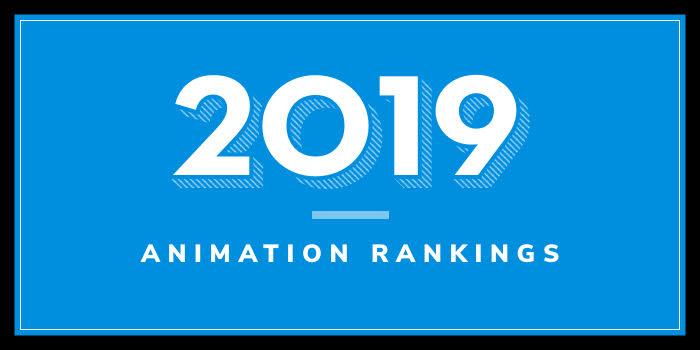
| Ranking | School | State |
|---|---|---|
| 1 | University of Southern California | California |
| 2 | University of California Los Angeles | California |
| 3 | The Ohio State University | Ohio |
| 4 | California State University-Long Beach | California |
| 5 | DePaul University | Illinois |
| 6 | Columbia College Chicago | Illinois |
| 7 | University of Texas at Dallas | Texas |
| 8 | Loyola Marymount University | California |
| 9 | Bowling Green State University | Ohio |
| 10 | California State University-Northridge | California |
| 11 | California State University-Los Angeles | California |
| 12 | North Carolina State University at Raleigh | North Carolina |
| 13 | New Jersey Institute of Technology | New Jersey |
| 14 | University of Advancing Technology | Arizona |
| 15 | Point Park University | Pennsylvania |
| 16 | Minnesota State University–Moorhead | Minnesota |
| 17 | Rutgers University | New Jersey |
| 18 | Emerson College | Massachusetts |
| 19 | University of Connecticut | Connecticut |
| 20 | University of Maryland Baltimore County | Maryland |
For our undergraduate degree rankings, we have evaluated animation schools and programs with the best Bachelor of Arts (BA), Bachelor of Fine Arts (BFA), and Bachelor of Science (BS) options. To determine which degree matches your career goals, it is important to understand how each qualification differs.
The Bachelor of Arts (BA) degree is the principal liberal arts degree. Most BA programs require 30-some or 40-some credits, which leaves plenty of flexibility in the form of free electives. BA students can use the free electives to sample widely from other course offerings or to earn an additional credential (a second major, a minor, or some combination of additional credentials).
The Bachelor of Science (BS) degree is offered in areas such as Computer Science, Mathematics, Psychology, Statistics, and each of the natural sciences. The BS is best suited to the student who wants to focus more on courses in the major and on 'collateral' courses (like chemistry or mathematics for a major in Geological Sciences) and is willing to give up some of the flexibility of the BA in return for the greater focus.
The Bachelor of Fine Arts (BFA) degree is considered the most prestigious bachelor's degree that you can receive in the visual arts. This option is for students who wish to gain as much experience and skill in the arts as possible.
Below are the Top 20 Animation Schools and Colleges with BA Programs for 2019.
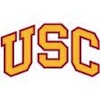 1. University of Southern California, Los Angeles, California
1. University of Southern California, Los Angeles, California
Established in 1880, University of Southern California (USC) serves 47,500 students enrolled in more than 200 undergraduate programs, 300-plus graduate programs, and more than 150 minors. Animation and Digital Arts programs are offered through The John C. Hench Division of Animation and Digital Arts (Hench DADA) of the School of Cinematic Arts (USC Cinematic Arts).
Undergraduate BA offerings for aspiring animators include a BA in Animation and Digital Arts. Course highlights for the program include Animation Design and Production, Basic Animation Production Technologies, Contemporary Topics in Animation and Digital Arts, Digital Narrative Design, Directed Studies in Animation, Expanded Animation, Expanded Concepts in 2-D/3-D Animation, Fundamentals of Animation, Storytelling for Animation, The Digital Actor, and 3-D Character Performance Animation.
Graduates of the animation programs at USC have landed positions at DreamWorks Animation, Sony Pictures, Nickelodeon Animation Studios, Pixar, Rhythm and Hues, Industrial Light & Magic, Digital Idea, Illumination Entertainment, Digital Domain and many others.
 2. University of California Los Angeles, Los Angeles, California
2. University of California Los Angeles, Los Angeles, California
Founded in 1919 as the Southern Branch of the University of California, University of California Los Angeles (UCLA) serves nearly 45,500 students from all 50 states and more than 100 foreign countries. The school offers 125+ undergraduate majors across 109 academic departments, and more than 40 graduate programs. The School of Theater, Film and Television, Department of Film, Television and Digital Media offers a BA in Film and Television that provides the opportunity to study all facets of digital media, film, and television, as well as a full year (20 units) of animation studies, followed by an internship.
Per the school, the program consists of three distinct areas “cinema and media studies (history, theory, and aesthetics); production (film, television, digital, experimental, and animation); and film and television craft (writing, directing, photography, sound recording, and editing).”
In their senior year, students concentrate in their choice of film production/directing (narrative and documentary), screenwriting, cinematography, animation, digital media, or editing/postproduction
The program prepares students to enter the entertainment or other related industry, or to enter UCLA’s prestigious Animation Workshop. The program leads to an MFA.
Graduates of UCLA’s animation programs have landed positions at Pixar, they have worked with directors such as Tim Burton, and on films such as The Simpsons Movie and Monster House.
 3. The Ohio State University, Columbus, Ohio
3. The Ohio State University, Columbus, Ohio
Established in 1870 as Ohio Agricultural and Mechanical College, The Ohio State University offers over 200 majors, minors and specializations from which more than 66,000 students can choose multiple paths to focus on animation. One of the newest paths offered here is the BA in Moving Image Production (MIP).
Introduced in Autumn, 2017 and administered by the Film Studies Program, the school says that the BA in MIP “is an interdisciplinary major that combines teaching and research expertise from our partners in Art, Dance, Design and Theatre, as well as the Advanced Computing Center for the Arts and Design (ACCAD).”
“Students majoring in MIP explore one of the most popular and vibrant contemporary art forms. The major focuses on developing students’ creative voices as they produce moving-image works across four areas: animation, experimental, documentary, and narrative. In addition, through the required Film Studies Minor, students engage with the entire culture of cinema, learning to think historically, theoretically, and critically about film.”
Students utilize state of the art facilities, equipment, and interdisciplinary expertise in the school’s many special labs, including the world class ACCAD. Other program highlights include local and summer internship opportunities and the opportunity to enter an annual competition.
 4. California State University-Long Beach, Long Beach, California
4. California State University-Long Beach, Long Beach, California
California State University Long Beach (CSULB) was established in 1949. One of the 23 campuses of the California State University System, CSULB serves 37,500 students enrolled in more than 300 programs across eight colleges. The College of the Arts houses the Department of Film & Electronic Arts, which offers a BA in Film and Electronic Arts.
Although the program does not have a formal animation specialization, the program highlights heavy animation coursework including 3D Computer Animation, History of Animation, Digital Arts Production (Visual Effects, Computer Animation, Interactive Media), and others.
Students in the program will also receive specialized training in narrative production, creative nonfiction production, broadcast production, cinematography, editing, sound design, screenwriting, production management, critical practice, digital arts, and production design. Other program highlights include abundant internship and networking opportunities, the opportunity to collaborate on projects with fellow students, access to state-of-the-art production facilities, and the opportunity to participate in the Annual CSU Media Arts Festival.
 5. DePaul University, Chicago, Illinois
5. DePaul University, Chicago, Illinois
Established in 1898, DePaul University serves nearly 22,500 students from across the U.S. and about 70 countries. The school offers 300 programs of study across 10 colleges and schools and two campuses in Chicago. The College of Computing and Digital Media (CDM) houses the School of Cinematic Arts, home of the animation program. With thirteen full-time animation professors, the School has one of the largest full-time Animation faculties in the US. The BA in Animation is one of the many programs offered through the School.
Per the College of CDM, the BA in Animation “emphasizes the art of animation, creativity, and critical thinking—while encouraging experimentation in form, content and medium—within a broad Liberal Arts context.” To develop their animation skills, students will produce live action videos, draw web-based shorts inspired by Hollywood or anime, or design motion graphics for film titles and commercials.
DePaul Animation students can apply to participate in the Animation Summer LA Quarter. This ten-week immersion program is structured around living in student housing, taking classes on a historic studio lot, and interning at high profile animation studios. The experience teaches students how to navigate the studio system and helps them build a network of professional contacts. Past participants have interned at Warner Brothers, DreamWorks Animation, Sony Studios, Disney, Nickelodeon, The Mill, The Jim Henson Company, Titmouse Animation, Bix Pix Animation, and others. Back at home, students will also benefit from CDMs relationship with Chicago’s largest game development and animation studios.
Graduates of the Animation programs at DePaul have been hired in animation roles at companies such as DreamWorks Animation, Laika Studios, Google, Blizzard Entertainment, Phosphor Studios, Wargaming, Nickelodeon, Electronic Arts, and Synapse Games, to name just a few.
 6. Columbia College Chicago, Chicago, Illinois
6. Columbia College Chicago, Chicago, Illinois
Established in 1890, Columbia College serves more than 7,300 students from nearly every state and more than 60 countries. The school has over 100 academic majors or programs across several schools and more than 20 departments. Schools include the School of Media Arts, the School of Fine and Performing Arts, and the School of Liberal Arts and Sciences. The School of Media Arts is home to the Interactive Arts and Media Department, which offers a BA in Animation with a Concentration in Computer Animation or Traditional Animation.
Computer Animation students have the option to focus in Visual Effects or Computer Animation. Traditional Animation students may focus in either Hand-Drawn or Stop-Motion Animation.
Sample courses for the program include Acting for Animators, Alternative Strategies in Animation, Animation for Comics, Animation Layout, Animation Maquettes, Animation Portfolio Development, Animation Production Studio, Cartooning, Cinematics for Games, Character Design and Modeling, Computer Animation: Visual Effects, Digital Animation Techniques, Drawing for Animation, Environmental Design & Modeling, Figure Drawing, Storyboarding for Animation, and The Business of Animated Content.
Students in the BA program have the opportunity to either work collaboratively with peers to create a six-minute animated film over two semesters or take any three Animation electives of their choosing.
 7. University of Texas at Dallas, Dallas, Texas
7. University of Texas at Dallas, Dallas, Texas
The University of Texas-Dallas (UT Dallas) was established as a member of the University of Texas System in 1969. The school serves 28,755 students enrolled in 130 academic programs across seven schools. The School of Arts, Technology, and Emerging Communication (ATEC) offers a BA in Arts, Technology, and Emerging Communication with an Animation Pathway, (BA ATEC).
Per the school, the “ATEC curriculum provides exposure to arts, science, technology, history, design, criticism, new knowledge creation, and complex understandings.” Undergraduate students “acquire foundational skills in media studies, cultural theory, computer programming, and creative production.”
The Animation Pathway “blends creative storytelling with technology to encourage experimentation in form, content, and medium and emphasizes 3D animation, which includes various artistic and technical disciplines such as modeling and texturing, character rigging, lighting and composition, computer programming and scripting, as well as character movement and acting.”
ATEC students have the opportunity to take a total of 15 credit hours/five courses in Animation, Design, Storytelling, and Games, to name a few. Courses such as Topics in Animation, Topics in ATEC, and Topics in Game Development are also available. Other program highlights include seminars and lectures, project and portfolio-based exercises, and applied and experimental research.
In addition to careers in animation and other areas of entertainment, students will learn skills that will prepare them for new and emerging fields such as medical and scientific visualization.
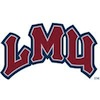 8. Loyola Marymount University, Los Angeles, California
8. Loyola Marymount University, Los Angeles, California
Established in 1911, Loyola Marymount University (LMU) serves 9,695 students enrolled in more than 170 major, minor, master’s degree, and doctoral programs through seven colleges and schools. The School of Film and Television is home to LMUs Animation Program, which leads to a BA. The School of Film and Television offers an Animation Minor that is available to all students, regardless of major.
Per the school, the cross-disciplinary BA in Animation “supports the creative vision of each student, providing a safe space for you to grow as an artist. Fostering the collaborative filmmaking process is essential, too–you can see teamwork in action in the animation labs, with students actively creating their collective projects. And state-of-the-art networked computer workstations allow them to collaborate with ease.” Students in the 120 credit hour program benefit from hands-on experience and small class sizes that “encourage a high degree of student-faculty interaction in coursework including Visual Effects, Stop-Motion, Experimental Animation, 2D and 3D, and Game Design.”
During the student’s junior or senior year, they will complete an Animation Internship that provides the opportunity to gain experience in the field. Also during the senior year of the BA program, students will write, animate and direct a thesis film/project for their portfolio.
The Animation Minor is an 18 credit hour program consisting of History of Animation, Introduction to 3D Computer Animation, Introduction to Interactive Animation, Beginning Animation Workshop, Visual Story Development, and three elective courses (9 semester hours), chosen from 300 and 400 level Animation courses under the direction of the Chairperson.
Graduates of the Animation programs at LMU will “have a unique personal artistic vision and work effectively in a collaborative filmmaking process.” They will also become “active leaders in the new emerging industries, whether it will be in the studio system or as independent artists.”
 9. Bowling Green State University, Bowling Green, Ohio
9. Bowling Green State University, Bowling Green, Ohio
Founded in 1910, Bowling Green State University (BGSU) serves 19,000 students, including 2,500 at BGSU Firelands in Huron, Ohio. The school offers more than 200 undergraduate majors and programs on the main campus and 22 at BGSU Firelands. The school houses nine colleges, including the College of Arts and Sciences, home of the School of Art. The School houses the BGSU Digital Arts program, which offers a BA in Art with a Digital Arts Specialization.
The programs offer three Focus Areas including Computer Animation & Video, Imaging, and Interactive Multimedia. Per the school, the Digital Arts program at BGSU is “one of the leading programs in the nation for studying digital arts and animation, focusing on creative expression using digital technology. Students are encouraged to investigate aesthetic and perceptual possibilities as they engage in alternative art discourses. Digital Arts courses investigate the theoretical, aesthetic, and technical aspects of the digital arts while providing hands-on experiences with state-of-the-art equipment.”
Students in the program focus on 3D animation, digital imaging, interactive art, video art, virtual environments and gaming, mobile web app development, digital painting, and hybrid forms of digital art. Other program highlights include diverse study abroad opportunities in more than 40 countries worldwide as well as facilities and faculty that “position students for successful internships and careers with organizations such as Disney Animation, Pixar and the Museum of Modern Art.”
In recent years, BGSU Digital Arts graduates have been hired by companies such as DreamWorks Animation, Blue Sky Studios, Volition, DNA Productions, Rhythm & Hues Studios, Blizzard, Friendly Software (Microsoft games), American Greetings, Epic Games, Apple, Designing Digitally, Root Learning (interactive training), LogicJunction (interactive web) and many more digital art companies.
 10. California State University-Northridge, Northridge, California
10. California State University-Northridge, Northridge, California
Founded in 1958, California State University Northridge (CSUN) serves more than 40,000 students enrolled in more than 140 programs. The school consists of nine colleges, including the Mike Curb College of Arts, Media, and Communication, which houses the Department of Art. Here, aspiring animators can earn a BA Visual Arts with one of three Animation Tracks including 2D Animation Design, 3D Animation, and Game Animation.
Per the school, 2D Animation Design “provides students with a foundation in drawing, design and the essential software skills necessary to thrive in post-graduation careers. Upon completing four lower division foundation courses, students take courses in 2D animation (flash/toonboom), pre-production and visual development, with optional classes in compositing and 3D computer animation classes. Students concentrating in the 2D design track spend their senior year focusing on their portfolios and/or collaborative group projects.”
The program prepares students for an artistic career in 2D animation as storyboard revisionists, in visual development, background design or painting, or as animators with a proficiency in flash and/or toonboom.
The 3D Animation Track offers four core CG animation courses with options in compositing, game animation, and Visual Development. Students concentrating in this track spend their senior year focusing on their portfolios and/or collaborative group projects. Career paths for 3D Animation graduates include Pre-Vis artist, character animator, CG modeler, texture painting and lighting artist, and compositor.
Students in all tracks have the opportunity to participate in industry and studio events, organized studio tours, and ongoing collaborative educational partnering with DreamWorks studios and Seoul Institute of the Arts. Students also participate in industry events and internships with Nickelodeon, Disney, Film Roman, Warner Bros., and others. Students in all programs have access to two award-winning student run animation clubs—the Animation Students League of Northridge and the Game Development Club.
Game Animation “builds on 3D computer animation courses to a two sequence game production classes.” Students who complete the track will take optional animation production, compositing, and character animation courses. Graduates of the program are prepared to seek positions in quality assurance, level design, modeling, texture painting & lighting, and character animation.
 11. California State University-Los Angeles, Los Angeles, California
11. California State University-Los Angeles, Los Angeles, California
Founded in 1947, California State University-Los Angeles (Cal State LA or CSLA) serves around 27,830 students enrolled in more than 150 programs through eight colleges. The College of Arts & Letters consists of nine departments including ART, Communication Studies, English, Liberal Studies, Modern Languages and Literatures, Music, Philosophy, Television, Film and Media Studies, and Theatre and Dance.
The ART Department offers a BA that the school says is “structured so that students have the opportunity to acquire an understanding of the variety of subjects encompassed within the visual arts as well as to develop excellence in a specific area. They are Animation; Art Education; Art History; Graphic Design/Visual Communication; Fashion and Textiles; and Studio Arts, which include ceramics, drawing, painting, photography, printmaking, sculpture and new genre.”
Specific undergraduate programs for aspiring animators include a BA in Art with an Animation Major. The BA is a 120-unit program that “provides a thorough education in the creative, practical and historical uses of animation. The option encourages an experimental approach to animation that combines traditional and contemporary techniques.”
Animation majors can choose courses involving: stop-motion animation, digital 2D and 3D animation, computer graphics, hand-painted abstract animation, story and visualization, as well as other art and film courses that galvanize their understanding of art-making, animation production, mixed-media, narrative, and cinema.
Students in the program will benefit from access to Cal State LA Fine Arts Gallery and frequent visits by guest artists and scholars.
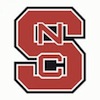 12. North Carolina State University at Raleigh, Raleigh, North Carolina
12. North Carolina State University at Raleigh, Raleigh, North Carolina
North Carolina State University (NC State) was established in 1887 and it serves nearly 35,500 students enrolled in more than 300 degree programs through 12 colleges and 65 academic departments. The College of Design, Department of Art + Design, offers a Bachelor of Art + Design: Animation + Interactive Media.
Per the school, the undergraduate animation program “gives students the opportunity to learn as they develop their creative portfolios through a wide-range of two-dimensional and three-dimensional traditional materials and computer-based processes.” These include “drawing and illustration, visual composition, soft materials construction, fibers, graphic and interactive narratives, motion graphics, visual effects, animation, web design, game design, interactive and computational media, virtual and augmented reality, 3D modeling, digital fabrication, and more.”
Animation students will take studios that introduce them to Principles of Storytelling, Animation, and Character Design through Sequential Imaging, along with courses such as Digital Imaging, Design Thinking, Advanced Writing, and Drawing. Students may also complete an optional internship and participate in the Art + Designer Showcase.
Graduates of the animation programs at NC State are prepared to work on short and full-length animated films, in character development for animated films, games, and digital storybooks, and on interactive and experimental projects.
 13. New Jersey Institute of Technology, Newark, New Jersey
13. New Jersey Institute of Technology, Newark, New Jersey
New Jersey Institute of Technology (NJIT) was founded in 1881. The school opened its doors as The Newark Technical School on Monday, February 9, 1885, with just 88 students. Today, NJIT serves more than 11,400 students enrolled in 50 bachelors, 59 masters and 19 doctoral degree programs across eight colleges and schools. The College of Architecture and Design houses the School of Art + Design, which offers a BA in Digital Design with two Tracks: Entertainment and Production.
Sample courses for the program include Digital Design Studio, 2D Character Design, 3D Character Development, Acting for Animators, Simulated Environments, Imaginary Worlds, Game Architecture and Design, Digital Sound and Music, Design Techniques, Color and Composition, and Game Modification.
Graduates of NJIT’s Digital Design Program have landed positions in the areas of animation, game design, graphic design, architectural and environment visualization, web design, storyboard art, and more. Among the studios where NJIT students have interned or worked full-time are 1st Avenue Machine, CSALAS & Co Labs, KWD – Kim Wendell Design LLC, Miskowski Design LLC, NTropic, SUSPECT vfx+design, SWDTech Games, and Tripwire Interactive.
 14. University of Advancing Technology, Tempe, Arizona
14. University of Advancing Technology, Tempe, Arizona
University of Advancing Technology (UAT) was founded in 1983 as the CAD Institute, where students were trained in computer-aided design and engineering. Today, UAT serves more than 1,000 students enrolled in 20 undergraduate technology degrees and five graduate degrees in advancing technology disciplines including Artificial Life Programming, Game Design, Robotics and Embedded Systems, Digital Video, Advancing Computer Science, and Cyber Security.
UAT describes its BA in Game Art and Animation as a “computer animation degree.” The program consists of 120 credit hours, including 36 major credits. Per the school, “students in the Game Art and Animation program will gain an insight into what is involved at all levels of game development to create 2D and 3D art and animation assets for multiple video game platforms such as PC, consoles, mobile, online and VR.” They will also “master the artistic principles used in video game art asset creation such as color theory, lighting, shading, anatomy, perspective, scene staging, modeling low polygon and high polygon, 3D modeling texturing, rigging and key frame and motion capture animations.”
Course highlights include Advanced Materials, Shaders and Lighting, Characters and Vehicles Animation, Concept Art, Environmental and FX Animation, Figure and Character Sculpting, Game Art and Animation Fundamentals, Game Texturing, and Industry Professional Development. Students will also take three Game Production Studio courses (Production Studio I-III), where they will collaborate and create games in a simulated production studio. An internship is also part of the program.
UAT BA in Game Art and Animation graduates will be prepared for jobs such as character artist modeler and texture artist, character artist animator and rigger, environment artist modeler and texture artist, environment artist animator, mechanical mesh modeler and texture artist, and mechanical mesh animator and rigger.
 15. Point Park University, Pittsburgh, Pennsylvania
15. Point Park University, Pittsburgh, Pennsylvania
Founded in 1933, Point Park University began as a small business training college. By 1960, the school had grown to 800 students. Today, the school serves more than 4,000 students from 49 states and 33 countries, enrolled in 77 undergraduate programs, 17 master's programs and three doctoral programs. Programs are offered through the School of Arts and Sciences, Rowland School of Business, School of Education, School of Communication, and the Conservatory of Performing Arts and Community Engagement (COPA).
The COPA offers a BA in Animation & Visual Effects with Concentrations in Animation or Visual Effects. The BA is a 120 credit hour program that consists of study in the areas of 2-D, 3-D and stop-motion animation, as well as visual effects for movies and motion graphics. In the Animation Concentration, students will develop skills for storyboarding, character development, modeling, compositing, and game design. In the Visual Effects Concentration, students will use “cutting-edge technology,” to create effects for movies, online, and broadcast content.
Course highlights for the program include Classical Animation, Classical Animation, Designing for Commercial Media Platforms, Illustrating for Electronic Media, Intermediate and Advanced Animation, Intermediate and Advanced Visual Effects, Intro to Digital Tools and Techniques, Sound for Digital, Stop Motion Workshop, Theory of Game Design, and Web Media Development, to name a few.
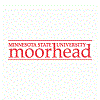 16. Minnesota State University – Moorhead, Moorhead, Minnesota
16. Minnesota State University – Moorhead, Moorhead, Minnesota
Founded in 1887, Minnesota State University – Moorhead (MSUM) serves nearly 6,000 students enrolled in 247 academic programs through five colleges and the Graduate School. The College of Arts, Media & Communication houses the School of Media Arts & Design and the School of Art. The School of Media Arts & Design offers a BA in Animation that the school says, “concentrates on the creation of technical graphics, 3D modeling, and techniques used in the animation industry, including game graphics and 3D simulations. Classes also include film studies and video/audio production.” Students will learn techniques for traditional stop motion animation and 2D and 3D computer animation, and they will become familiar with hardware such as cameras, lights and animation stands, as well as software such as 3D Studio Max, MAYA, Final Cut Pro, Adobe Illustrator, After Effects, Photoshop, InDesign and more.
The curriculum for the program provides students with the unique opportunity to “develop a background in film and a foundation in live-action shooting, which is highly beneficial for animation professionals.”
Graduates of the BA in Animation at MSUM may find employment with animation studios, video production houses, television stations, music industry, multimedia, web, and advertising agencies.
 17. Rutgers University, Newark, New Jersey
17. Rutgers University, Newark, New Jersey
Founded in 1766 as Queen's College, Rutgers, The State University of New Jersey, is the largest and most comprehensive higher education institution in the state. The school nearly 70,900 students from 50 states and more than 125 countries enrolled in more than 550 programs through 29 schools and colleges. The College of Arts and Sciences houses the Department of Fine Arts, which offers a BA with an area of Specialization in Art: Concentration Animation.
Per the school, students in the program “learn to prepare two and three-dimensional art for animation films, gaming, video, advertising, architecture, medical research, and web design in the most comprehensive and advanced courses available in this region.” Sample courses include Animation Production, Advanced Computer Studio, Visual Fundamentals, Character Animation, Computer Animation, Computer Graphics, Kinetic Sculpture, New Media Art, Color Theory, Classical Animation, Computer Multimedia, Environmental Design, Design for the World Wide Web and Video and Film Production.
Students in the program will also complete Special Studio Projects, which allows them to work closely with a studio faculty adviser to develop and execute a specified series of art works. An internship is also part of the program and all students have access to on-campus laboratories equipped with state-of-the-art networked computers and post-production units, as well as 2D/3D editing software.
Graduates of the program have worked in the 3D animation industry as art directors and technical directors for various companies, such as Blue Sky, Walt Disney, Warner Brothers, Digital Domain, Ubisoft, BBC Earth, Quiet Man, Psyop, The Mill, Smoke & Mirrors, etc. In addition, they have participated making a variety of award-winning movies and games, such as Ice Age, Happy Feet, Frozen, Sesame Street 3D, Walking with Dinosaurs 3D, Assassin’s Creed Unity, and more.
 18. Emerson College, Boston, Massachusetts
18. Emerson College, Boston, Massachusetts
Founded in 1880, Emerson College serves nearly 4,500 students from 50 U.S. states and 55 countries. The school offers more than 50 programs leading to a BA, BS, BFA, MS, MA, or MFA degree. The School of the Arts, Department of Visual & Media Arts (VMA) offers a BA in Animation and Motion Media, and a BA in Visual & Media Arts with a Production Track.
The BA degree requires 44 credits in the major, including eight additional upper-level liberal arts credits. Per the school, the program focuses on computer animation, film animation, motion graphics, visual effects, and compositing techniques. Students have the opportunity to “take a broad range of courses and will produce original work in digital 2D animation, 3D modeling and animation, and frame-by-frame film animation.”
Course highlights include Computer Animation, Advance Computer Animation, Film Animation, Motion Graphics, Advances Interactive Media, Programming for Digital Media, and 3D Gaming.
Graduates of the VMA animation programs will be prepared to seek careers in the movie, gaming, and television industries. Recent graduates have found employment at Soup2Nuts, Hallmark Channel, SCG Productions, World Wide Pants, Digital Domain, Fox Searchlight, MAD TV, MGM Studios, Bunim-Murray Productions, and more.
 19. University of Connecticut, Storrs, Stamford, Connecticut
19. University of Connecticut, Storrs, Stamford, Connecticut
Established in 1881 as Storrs Agricultural School, the University of Connecticut (UConn) opened with just three faculty members and 13 male students. Today, the school serves nearly 32,200 students enrolled in seven undergraduate degrees in 113 majors, 17 graduate degrees in 90 research and professional practice fields of study, and six professional degree programs (JD, LLM, MD, DMD, PharmD, SJD). Programs are offered across one main campus, five regional campuses and 14 colleges and schools.
The School of Fine Arts offers a BA in Digital Media and Design with Concentrations in 2D Animation & Motion Graphics, and 3D Animation & Visualization. Per the school, the 2D Animation & Motion Graphics area educates students in the “conceptual and technical aspects of time-based storytelling,” preparing “students for careers using 2D/3D animation, design, and video in the context of the arts, entertainment, marketing, communications, education, advertising, scientific visualization, and more.” Course highlights include Animating Science, Experimental & Alternative Techniques, and Motion Graphics I & II.
The 3D Animation & Visualization area gives students “experience in all aspects of 3D animation production: modeling, lighting, rendering, animation, simulations and visualizations, rigging and compositing for visual effects." Courses "focus on the core principles of 3D animation” and “experiential learning through personal and group projects employing problem-solving methods, critical thinking, and analysis, research and reflection.” 3D Simulations, Modeling, Lighting & Rendering, Compositing for Visual Effects, and Animation are just a few course highlights.
Per the school, students in all programs "have the opportunity participate in initiatives like AntU, which brings together Digital Media and Design, Ecology and Evolutionary Biology, and the Connecticut State Museum of Natural History. Throughout their coursework, UConn Storrs students are able to work with faculty and peers across the School of Fine Arts, as well as in science, engineering, business, and humanities departments.”
UConn Storrs students have obtained jobs (often within six months of graduation) and paid internships at Adobe, CBS 2 News, and NBC Sports Group, as well as at smaller animation and design studios like Alessandro Weber Design, DW Advertising, milk*, Fusion 360, and XVIVO | Scientific Animation.
 20. University of Maryland Baltimore County, Baltimore, Maryland
20. University of Maryland Baltimore County, Baltimore, Maryland
Founded in 1966, University of Maryland Baltimore County (UMBC) serves approximately 13,767 students enrolled in more than 200 majors, minors, certificate, master’s and doctoral programs across seven colleges and schools. The College of Arts, Humanities, and Social Sciences (CAHSS) houses the Department of Visual Arts, which offers a BA in Visual Arts with a Concentration in Animation.
Per the school, students in the program will study “animation and interactive media through a combination of traditional media and digital tools. In-class critiques of personal work and investigation of the history of animation and interactive art are emphasized for the development of a framework from which students can begin their path as animators and interactive artist.”
Advanced level courses in animation “incorporate technically intensive experiences in 3-D computer animation and digital compositing, as well as explorations of emerging practices including real-time applications and interactive animation.” Students completing the Animation Concentration have the opportunity to produce a fully developed work at the culmination of the program, either individually or as part of a team.
Graduates of the animation programs at UMBC “have become successful freelance artists and many remaining locally have found jobs at government agencies, game companies, and broadcast studios. Others have been hired at west coast animation houses, or are accepted into graduate programs of their choice.”

